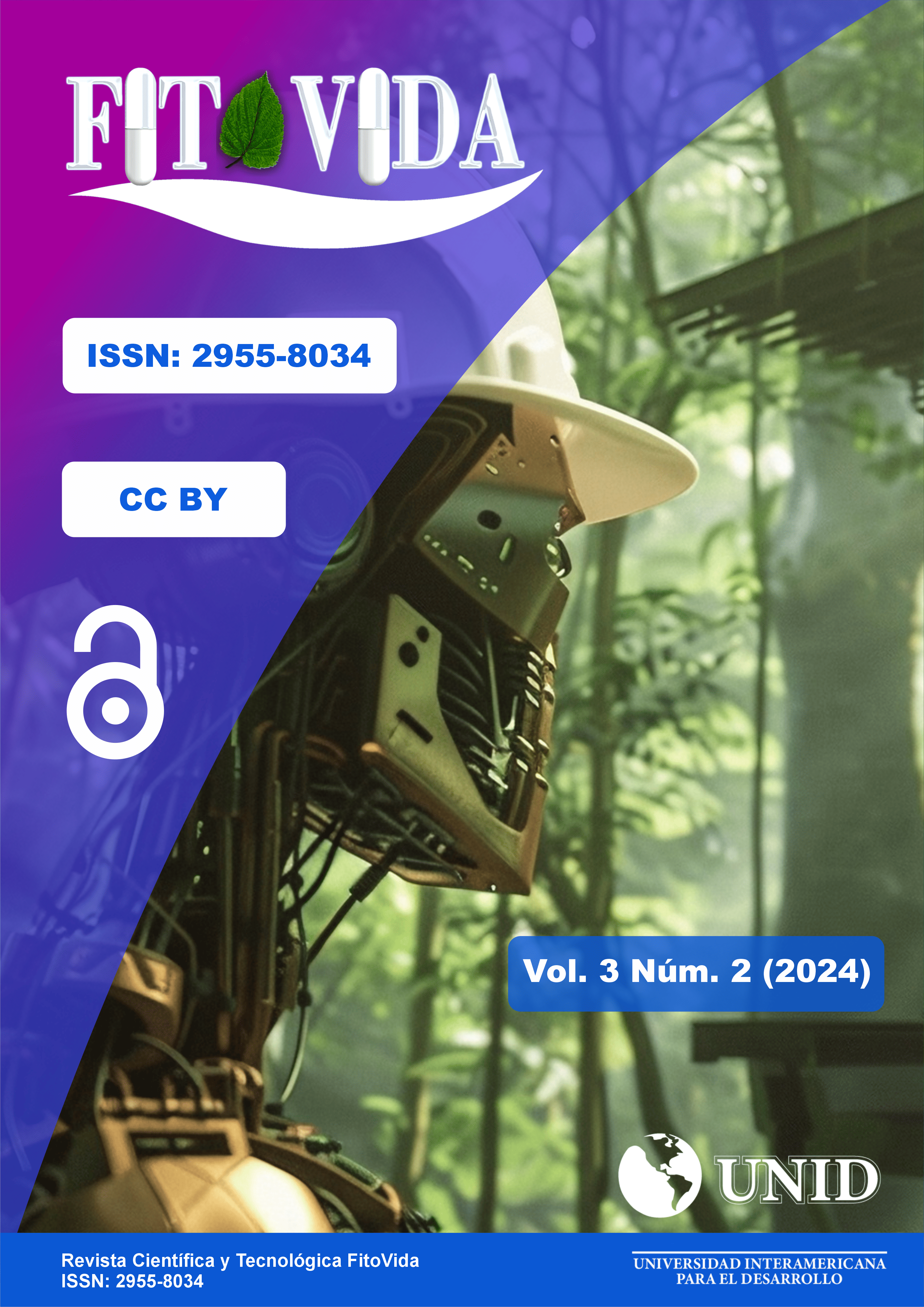Abstract
In order to understand the interactions of the fungi that harm the decomposition of the wood of the forest species of Alnus acuminata, the objective of this study was to identify the characteristics of the fungi that attack the species Alnus acuminata located in the Lindero 2 de Mayo valley. The methodological design used in this study was descriptive, since it focused on the observation and characterization of the pathogenic fungi that affect Alnus acuminata. The fungus, Fomes fomentarius presents sporangia with a globular shape and mycelial structures that spread dispersely on the substrate. For this reason, the wood of Alnus acuminata affected by this fungus presents collapsed and deformed areas, indicative of the enzymatic action of the fungus. Conduits of interrupted porosity can be seen, where the fungus selectively degrades lignin, leaving a matrix rich in cellulose. While the fungus Stereum rugosum shows in its shape globose sporangia with smooth walls, which are connected to thin and branched hyphae, where both pathogens cause significant damage to the species Alnus acuminata, having a negative impact on the forest. The study identified the fungi Fomes fomentarius and Stereum rugosum as pathogens that affect Alnus acuminata, weakening its structure through the decomposition of lignin and wood. The microscopic characterization highlighted its adaptive capacity and reproduction mechanisms.
References
Andrango Chisaguano, E. X. (2022). Influencia De Las Ondas Electromagnéticas En El Hongo Roya En Plantas Ornamentales (Master's thesis, Quito, Ecuador: UISRAEL).(1-84)
Bosch, J., Dobbler, P. T., Větrovský, T., Tláskal, V., Baldrian, P., & Brabcová, V. (2024). Decomposition of Fomes fomentatius fruiting bodies–transition of healthy living fungus into a decayed bacteria-rich habitat is primarily driven by Arthropoda. FEMS Microbiology Ecology, 100(5), fiae044.https://academic.oup.com/femsec/article/100/5/fiae044/7637780?login=false
Cuerpo, L. (1994). Hongos de descomposición latente: ¿El enemigo oculto? Revista Arborícola , 18 (2), 14–36. https://doi.org/10.1080/03071375.1994.9747007
Del Valle Bejarano, N., Castro, Y., Gerónimo, G., Apaza, D., Atanacio, Y., Vera, M., ... & Arjona, C. (2024). Basidiomicetes en la muerte de ejemplares del arbolado urbano. Revista Científica FCA, 17(1).
Erazo, O., Fernández, Y., Molina, Y., Araujo, J., & Encinas, O. (2019). Durabilidad natural de Alnus Acuminata KUNTH. La Revista Forestal Venezolana, 63(1), 23-37.
Fukasawa, Y., 2021. Ecological impacts of fungal wood decay types: a review of current knowledge and future research directions. Ecol. Res. 36 (6), 910 – 931.
Garbacz, M., Malec, A., Duda-Saternus, S., Suchorab, Z., Guz, q., qagod, G., 2020. Methods for early detection of microbiological infestation of buildings base don gas sensor tecchnologies Chemosensors 8 (1), 7.
Gomez-Brand on, M., Probst, M., Siles, J.A., Peintner, U., Bardelli, T., Egli, M., Insam, H., Ascher-Jenull, J., 2020. Fungal communities and their association with nitrogen-fixing bacteria affect early decomposition of Norway spruce deadwood. Sci. Rep. 10 (1), 8025.
Montoya, S., Gallego, J. H., Sucerquia, Á., Peláez, B. J., Betancourt, Ó., & Arias, D. F. (2010). Macromicetos observados en bosques del Departamento de Caldas: su influencia en el equilibrio y la conservación de la biodiversidad. Boletín científico. Centro de museos. Museo de Historia Natural, 14(2), 57-73.
Pautasso, M., Schlegel, M., & Holdenrieder, O. (2015). Forest health in a changing world. Microbial Ecology, 69, 826-842.
Weng, C., Bush, M. B., & Chepstow‐Lusty, A. J. (2004). Holocene changes of Andean alder (Alnus acuminata) in highland Ecuador and Peru. Journal of Quaternary Science, 19(7), 685-691.

This work is licensed under a Creative Commons Attribution-NonCommercial 4.0 International License.
Copyright (c) 2025 Elyane Estefany Belito Huamani, Susan Karina Montes Bujaico, Misael Montes Bujaico, Deyvid Cruz Ventura, Fredy Quintana Uscamayta, Jonatan Quispe Taipe






